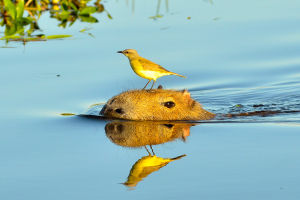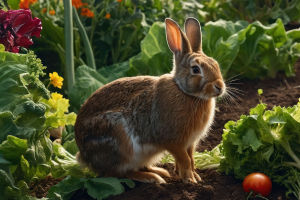Hey Lykkers! Have you ever noticed how some animals seem to magically change their looks when winter rolls around? It’s like they have a secret wardrobe just for the cold months!
Today, we’re diving into the fascinating world of animals that change color in winter — it’s nature’s way of helping them blend in, stay safe, and survive those chilly days. Ready to learn about these cool creatures? Let’s jump right in!
1. Arctic Hare
The Arctic hare is a true winter warrior. During summer, it sports a grayish-brown coat that blends perfectly with the tundra’s rocky and grassy landscape.
But come winter, its fur turns snowy white to match the snow-covered environment. This camouflage helps it avoid predators like foxes and wolves, making it almost invisible in the snowy wilderness.
2. Snowshoe Hare
Similar to the Arctic hare, the snowshoe hare also changes coat colors seasonally. Its summer fur is brownish-red, which helps it hide among forest floors and fallen leaves. In winter, it turns pure white, blending with the snow. Fun fact: its big feet act like snowshoes, helping it move swiftly on top of the snow!
3. Ptarmigan
This bird is a master of disguise. The ptarmigan changes its feathers from mottled brown in summer to completely white in winter. This color shift helps it stay hidden from predators in snowy environments. Plus, its feathered feet act like natural snow boots, keeping it warm and steady.
4. Ermine (Short-tailed Weasel)
The ermine is a sleek little predator that also sports a seasonal makeover. In warmer months, it has a brown coat with a white belly, but in winter, it turns completely white except for the black tip of its tail. This helps it sneak up on prey without being spotted in the snow.
5. Arctic Fox
One of the most famous winter changers, the Arctic fox grows a thick white coat in winter that blends seamlessly with the snow. During summer, its fur turns brown or gray to match the rocky tundra and mossy ground. This color switch is key to staying hidden from both prey and predators in its harsh environment.
6. Willow Ptarmigan
A close cousin of the ptarmigan, the willow ptarmigan follows the same pattern of changing feathers from brownish in summer to white in winter. These birds are true masters of blending in, which is super important for survival during long snowy months.
7. Mountain Hare
Found in colder regions of Europe and Asia, the mountain hare changes its coat from brown or gray in warmer months to white in winter. This change helps it hide from predators in snowy forests and moorlands. When spring arrives, it switches back, showing off its brown coat again.
Why Do They Change Colour?
Most of these animals change color to camouflage with their surroundings—white for snow, brown for rocks and dirt. It’s a smart survival trick to avoid predators and sometimes sneak up on prey. Some also change their fur thickness and color to help with insulation against the cold.
Final Thoughts
Isn’t nature incredible? These color-changing animals remind us just how clever and adaptive wildlife can be. Next time you’re out in the snow or reading about winter creatures, think about these amazing transformations happening right under our noses!
Got a favorite color-changing animal or want to know more about how animals survive winter? Just ask, Lykkers—I love sharing cool nature stories!
Stay curious and keep exploring!


